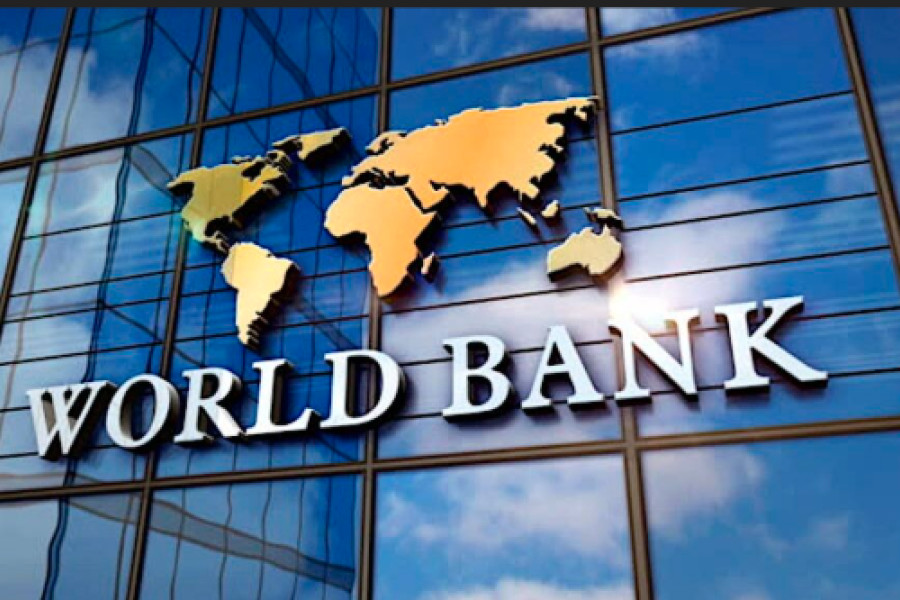
Zimbabwe's Compensation Conundrum: A Pyrrhic Victory? Examining the Risks of USD-Denominated Bonds in Settling Land Reform Debts
Zimbabwe took a seemingly momentous step towards addressing a deeply contentious chapter in its history by disbursing on April 10, 2025 the first tranche of compensation payments to white commercial farmers whose land was expropriated during the tumultuous land reform program that commenced in 2000. This long-awaited move, framed by the government as a pivotal moment in its strategy for international re-engagement and a testament to newfound fiscal responsibility, saw a US$3 million allocation directed towards 378 of the initial 740 farms vetted under a 2020 agreement. This agreement had committed Zimbabwe to a substantial US$3.5 billion compensation package over time.
However, the celebratory tone surrounding this announcement was immediately tempered by a critical caveat: the lion's share of the US$311 million required for this initial compensation group would be financed through the issuance of USD-denominated Treasury bonds. This financing mechanism raises profound questions about the underlying implications for Zimbabwe's fragile economy, its nascent financial system, and its precarious international credibility.
While the principle of compensating individuals for legally and morally questionable land seizures is both justifiable and likely a politically necessary step to mend fractured international relationships and attract much-needed investment, the chosen method of financing carries significant risks. The issuance of substantial volumes of Treasury bonds denominated in a foreign currency, particularly in relation to the country's liquid foreign currency reserves, could inadvertently sow the seeds of a renewed economic crisis, echoing the disastrous experiences of Zimbabwe's recent past.
At the heart of the concern lies the inherent nature of bonds as debt instruments. When issued in a foreign currency and in volumes that dwarf available liquid foreign currency balances, these bonds can functionally morph into a form of quasi-money within the domestic financial system. The danger here is stark and rooted in Zimbabwe's painful history. During its previous multi-currency or de facto dollarisation regime, the government resorted to issuing local debt instruments that were notionally backed by the US dollar. Crucially, these instruments became increasingly detached from the actual USD cash and nostro account balances held by the banking sector. This growing mismatch in perceived and real value ultimately led to a catastrophic collapse of confidence, triggering widespread bank runs, severe cash shortages, and the subsequent introduction of discredited bond notes and the Real Time Gross Settlement (RTGS) dollar. These ill-fated monetary instruments rapidly lost any semblance of parity with the greenback, plunging the nation into another devastating hyperinflationary spiral. The current compensation model, relying heavily on USD-denominated bond issuance, carries the ominous potential of reopening these very same economic wounds.
A critical assessment of this bond issuance plan necessitates a careful examination of Zimbabwe's current liquidity position. According to the most recent data from the Reserve Bank of Zimbabwe (RBZ), the total stock of liquid cash within the system – encompassing USD banknotes in circulation and the crucial nostro balances held by commercial banks – stands at a meager approximately US$290 million. This figure represents the entirety of the real, immediately accessible US dollars within the domestic banking system. Against this backdrop, the government's plan to inject a staggering US$308 million worth of Treasury bonds into the market under the first phase of compensation obligations presents a glaring and potentially destabilizing imbalance. The sheer volume of the proposed bond issuance significantly exceeds the available liquid USD within the economy, creating a high-risk scenario for currency dilution and a resurgence of parallel market activities.
While Treasury bonds are technically debt instruments and not currency per se, their practical behavior within Zimbabwe's specific financial architecture renders this distinction somewhat academic. In the absence of deep and well-functioning capital markets and a sophisticated secondary trading infrastructure, these bonds often end up being treated as near-cash instruments. Commercial banks, often under pressure or incentivized by the government, may use these bonds to artificially shore up their balance sheets. Investors, lacking alternative safe havens for their capital, may reluctantly hold them in lieu of actual USD deposits. Furthermore, the government itself might be tempted to utilize these bonds to clear outstanding arrears with domestic suppliers, further injecting them into the economic bloodstream. The cumulative effect of these actions is that these bonds begin to circulate within the economy and become priced into financial expectations, effectively increasing the perceived money supply without a corresponding increase in real foreign currency backing.
This dynamic carries two major and interconnected consequences. Firstly, it poses a significant threat to undermining the already fragile trust in the banking sector. If depositors begin to perceive that their USD balances held in banks are becoming increasingly intertwined with government-issued IOUs rather than tangible hard currency, the collective memory of the 2015-2018 financial crisis could trigger a widespread withdrawal scramble, further depleting the already limited liquid USD reserves and destabilizing the entire financial system. Secondly, it raises the ominous specter of widespread mispricing within the financial system. Without a deep and liquid secondary market where these bonds can be freely traded and their value accurately determined by market forces, banks and other financial institutions may be compelled or incentivized to hold them at their face value (par). This artificial valuation would distort their balance sheets, masking underlying solvency risks and creating a false sense of financial stability.
The assumption that USD-denominated Treasury bonds can be smoothly absorbed by the Zimbabwean economy rests precariously on the belief that the country possesses the requisite institutional infrastructure to support a robust bond market. This assumption, however, appears fundamentally weak when viewed against the backdrop of Zimbabwe's economic realities. The country's bond market lacks the essential depth, breadth, and crucially, the investor confidence required to absorb large debt issuances without causing significant distortions, crowding out much-needed private sector investment, or undermining the already precarious monetary stability. The pool of domestic institutional investors is limited in number, and those that exist, such as pension funds, are often constrained by regulatory ceilings and a justifiable aversion to high-risk assets. Furthermore, foreign investors, acutely aware of Zimbabwe's history of sovereign risk, inconsistent policy implementation, and persistent capital controls, are highly unlikely to wade into these uncertain waters.
Beyond the immediate financial system risks, there is a critical macroeconomic angle to consider. Issuing bonds denominated in a foreign currency when the central bank does not have the capacity to print that currency creates a fundamental sovereign risk mismatch. Zimbabwe's central bank cannot simply monetize its USD debt without either defaulting on its obligations or resorting to measures that would further distort its already fragile financial system and erode any remaining confidence in its monetary policy. In effect, every USD-denominated bond issued becomes a hard currency liability that must ultimately be met through tangible foreign currency inflows, such as export earnings, remittances from the diaspora, or the increasingly elusive foreign loans. Given the country's persistently fragile external position, including its limited access to crucial financial support from international institutions like the International Monetary Fund (IMF) and the World Bank, the government's long-term ability to credibly redeem these bonds remains highly questionable.
This predicament points to a broader philosophical problem at the heart of Zimbabwe's compensation strategy: the nation is attempting to resolve a historical injustice – the seizure of land – by employing financial tools that carry a significant risk of generating new and potentially equally damaging economic injustices. While the moral and legal imperative to compensate displaced farmers is undeniable, pursuing this objective in a manner that erodes already fragile currency trust, distorts monetary policy mechanisms, and undermines the nascent recovery of financial intermediation could ultimately prove to be a self-defeating exercise.
A more prudent and sustainable model for compensation would likely involve a carefully calibrated blend of smaller, phased cash payments, potentially supported by guarantees or instruments backed by credible third-party institutions. Alternatively, Zimbabwe could explore innovative financing mechanisms such as diaspora bonds, leveraging the significant remittances sent home by Zimbabweans living abroad, or even the securitization of future export earnings as collateral for compensation tranches. Relying solely on a large issuance of USD-denominated Treasury bonds, without addressing the underlying liquidity constraints and structural weaknesses of the Zimbabwean economy, risks fiscal and monetary instability and could ultimately derail the very international re-engagement efforts the government seeks to achieve.
Furthermore, the government must provide transparent and detailed information regarding how the issuance of these Treasury bonds will interact with the country's current monetary policy framework, particularly under the newly adopted Zimbabwe Gold (ZiG) currency regime. If commercial banks are expected or incentivized to absorb these USD-denominated bonds and subsequently use them as a basis for creating domestic liquidity in ZiG, the tenuous linkage between foreign-denominated debt and local currency expansion could severely destabilize the already fragile exchange rate anchors. This risk is particularly acute in an economic environment where currency confidence is still being painstakingly rebuilt and price signals remain highly elastic and susceptible to speculative pressures.
The compensation payout also carries significant geopolitical ramifications. Zimbabwe is explicitly framing this agreement as a signal of goodwill and a commitment to the rule of law in its efforts to re-engage with Western nations and multilateral creditors. However, if the very mechanism employed to deliver this compensation is perceived by the international community as fiscally reckless or fundamentally unsustainable, it could ultimately do far more harm than good to these re-engagement efforts. Genuine re-engagement requires not just symbolic gestures but also demonstrable evidence of credible economic management and sound financial policies. A bond market that collapses under the weight of poor liquidity management and a lack of investor confidence would only serve to confirm the very fears and reservations that Zimbabwe is desperately trying to allay.
Finally, there is a crucial question of intergenerational fairness that must be considered. Treasury bonds issued today represent financial obligations that will mature and require repayment in the future. In the absence of robust and sustained economic growth or the creation of new fiscal space, the burden of repaying these debts will inevitably fall upon future governments and taxpayers. This could significantly restrict fiscal policy flexibility in the years to come, increase debt servicing costs, and potentially force painful economic adjustments that could hinder long-term development. Zimbabwe must carefully consider whether it is truly prudent to mortgage the economic future of its citizens in the name of rectifying a historical injustice, particularly when alternative and potentially less risky compensation models have not been fully and transparently explored.
In conclusion, while the initial payout to white commercial farmers on April 10, 2025, may be hailed by some as a significant political and legal milestone, the chosen method of financing this compensation through a large issuance of USD-denominated Treasury bonds is fraught with considerable danger. This approach carries a significant risk of repeating the very mistakes in monetary and fiscal management that led to the devastating collapse of Zimbabwe's first dollarisation period. It exposes the already fragile financial system to new and potentially destabilizing vulnerabilities. And it places unrealistic expectations on an economy characterized by shallow capital markets, limited external buffers, and a history of currency instability. The government of Zimbabwe must urgently reassess its current strategy, engage in transparent consultations with all relevant stakeholders, and design a compensation program that genuinely heals the wounds of the past without inadvertently creating new and equally damaging economic scars for the future. Only through such a prudent and carefully considered approach can Zimbabwe truly turn this historical reckoning into a foundation for sustainable economic recovery and lasting international re-engagement.
Related Stories

The Future of Sustainable Development in an Artificial Intelligence Era: Africa’s Path Forward

The World Bank at 80: An Afrocentric Critique of Poverty Alleviation Efforts